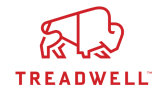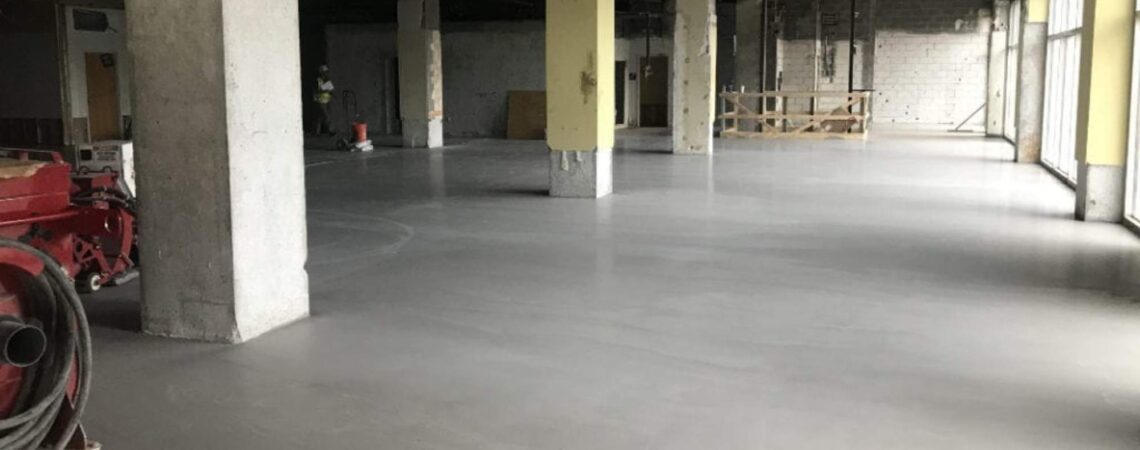HOW TO LEVEL A CONCRETE FLOOR: WHY IT’S NECESSARY AND HOW TO GET IT DONE THE RIGHT WAY
Level concrete is essential for the safety, durability, and longevity of your flooring. Whether you’re planning to polish the concrete for a natural look, or apply a coating like epoxy, starting with a level surface is a non-negotiable.
The great news is that leveling a concrete floor is a solvable problem that is not only within our reach, it’s our area of expertise! If you have asked yourself how to self-level a concrete floor, we can spare you the research and the trouble. We’ll help you determine the right approach so that you can achieve a smooth and even surface that is both functional and beautiful.
In this article, we will review important considerations about the necessity of leveling your concrete floor, the materials and equipment that we use, our team’s step-by-step process when providing this service, and more.
Table of Contents
- Why Is It Important To Level an Uneven Concrete Floor?
- Material and Equipment Needed To Properly Level a Concrete Floor
- How To Level an Uneven Concrete Floor: The Treadwell Step-by-Step Process
- How Much Downtime Is Required When Leveling a Concrete Floor?
- How Much Does It Cost To Level a Concrete Floor?
- Treadwell: Your #1 Choice for Commercial Concrete Floor Leveling Services in Kansas City
Why Is It Important To Level an Uneven Concrete Floor?
At Treadwell, we believe that even concrete flooring is essential in any setting. On a new build or a remodel, laying new flooring or epoxy requires a flat surface. This is important because even concrete flooring:
- Provides durability
- Ensures flooring installation is smoother, whether that’s epoxy or other flooring
- Provides modern aesthetics
- Can affect foot traffic and health
- Mitigates safety and efficiency issues, especially for forklifts and other vehicle traffic
If you want to get it right, contact the Treadwell pros!
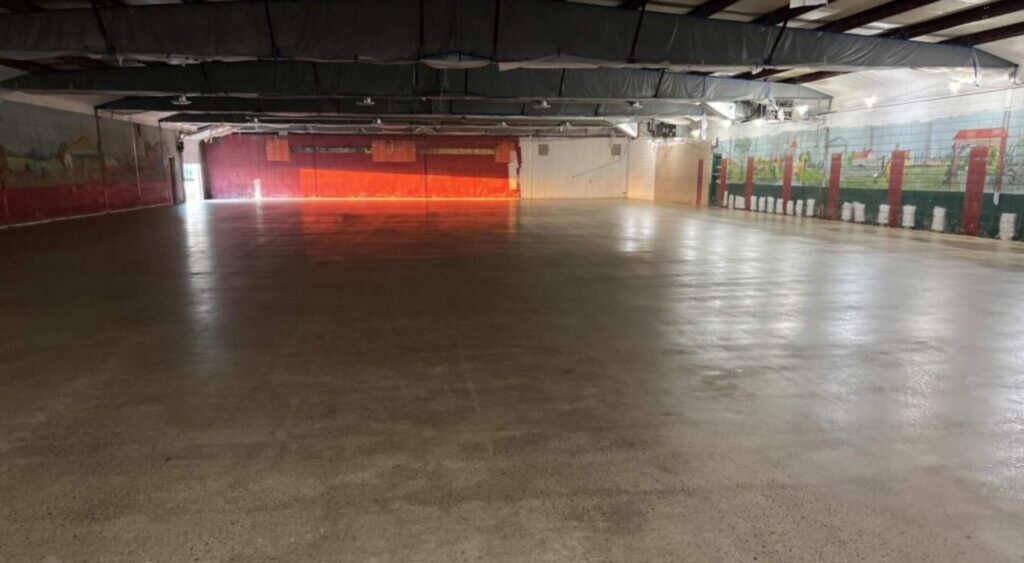
Material and Equipment Needed To Properly Level a Concrete Floor
To properly level a concrete floor, we use a variety of materials that have different but essential roles in guaranteeing that your concrete floor is evenly distributed and sealed:
- Grade pins are used to create reference points for the depth of the concrete pour.
- Cementitious material (self-leveling compound) is used as the unconfined material poured to create the level surface.
- Primer is applied to the flooring to prep it for the leveling compound and to prevent the separation of materials over time.
- A level is used to examine to what extent the compound is evenly distributed and to identify problem areas.
To be able to efficiently handle these materials, we use equipment such as:
- Grinders to smooth out rough surfaces and prepare existing surfaces before applying materials
- Rakes to equitably distribute the compound across the floor
- Smoothers to refine the surface after the application of compound
How To Level an Uneven Concrete Floor: The Treadwell Step-by-Step Process
There are a few methods commonly used to level an uneven concrete floor, but the process below is the proven method used by Treadwell. We use this method because of its proven effectiveness, producing quality results. It is also cost-efficient because it is less labor-intensive than other methods. In this section, we will outline what our typical step-by-step process looks like after you contact us.
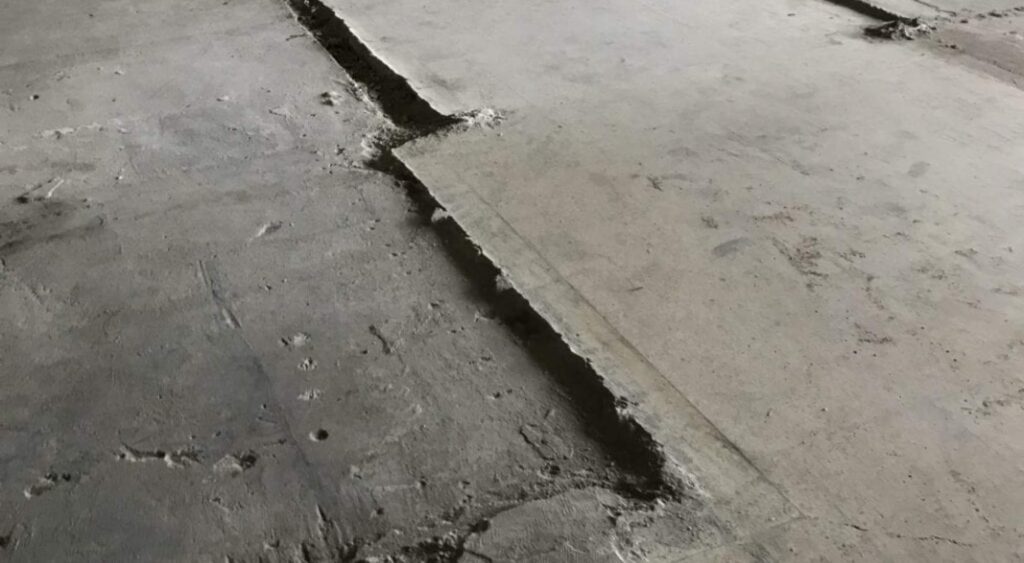
Step 1: Consultation and Measurement
Our team will come to your facility to assess the area in person to figure out how much material we’ll need for the process. We will measure square footage, determine where the lowest part is, and measure from there to the highest point in a grid. Our installation process follows the same protocols, so the installers subsequently know where the lowest point is.
Step 2: Prepare an Estimate and Proposal
After we have gathered the data we need, our team will make an estimate and send our proposal for your facility flooring. We’ll wait for your confirmation before proceeding with the next step.
Step 3: Schedule the Install
Once you report back to Treadwell that you want to move forward with our proposal, we work tirelessly to exceed your expectations. To help streamline the process, you can contact us for your free consultation!
Step 4: Demolition and Prep Work
Demolition and prep work take up most of the time in the concrete leveling process.
Demolition
Existing flooring might need to be demolished, or your flooring might have glue or tile mortar that needs to be removed with a diamond grinder. If we are working with bare concrete, we shot blast it, which puts a texture on the surface to ensure good bonding of the self-leveling underlayment. This measure effectively ensures that the surface is non-slippery.
Apply Primer
Once we clean the residue after the demolition process, the next step is to apply a primer. There are two categories we choose from for our clients depending on their expectations about the finished product. Typically, we install an acrylic primer and allow for some downtime to dry before moving to the next component.
Set Grade Pins
Once the primer sets, the installer sets multiple grade pins across the area that stick to the floor for metering purposes. He trims them off to the appropriate measures, keeping in mind the desired finish when it comes to the height and slope of your concrete flooring.
Step 5: Install Self-Leveling Material
Our team pumps the cementitious material from outside — the machine mixes it and it is pumped in through a hose. The installation of this material is usually quick.
There will be a handful of members from our crew working at the same time when the material is coming through the pump hose. One uses an adjustable rake to distribute the material on the floor. Then another goes behind him and uses a smoother to break the surface tension and settle out any waves. The concrete will self-level after we stimulate the direction of movement on the surface.
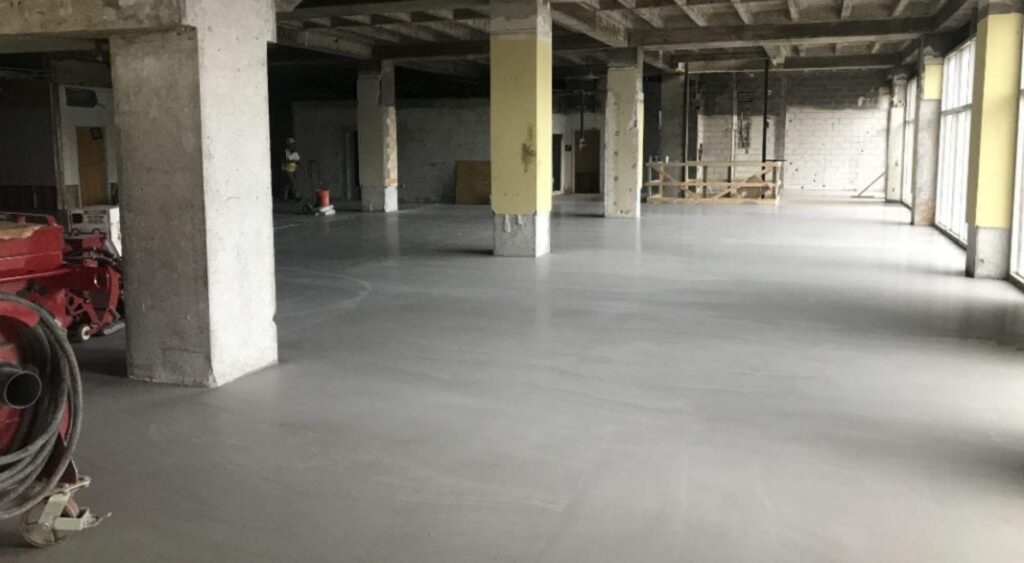
How Much Downtime Is Required When Leveling a Concrete Floor?
Depending on the size of the space you intend to level the floors in, the downtime required when specifically leveling a concrete floor can take up to a few days. Another factor that can influence the downtime is how unlevel the surface was initially.
How Much Does It Cost To Level a Concrete Floor?
We can give you an estimate of the cost breakdown for a project like this when you contact us at Treadwell for a consultation. Since we need to consider many factors, a consultation can allow both you and the team at Treadwell to take a closer look at your flooring expectations and evaluate the best service for you.
Treadwell: Your #1 Choice for Commercial Concrete Floor Leveling Services in Kansas City
The team at Treadwell is looking forward to the possibility of serving you with concrete floor leveling in Kansas City. Working with us ensures a comprehensive analysis of your facility floors from experts, a collaborative approach, and a tailored offering to make your visions a reality! We are confident that you will be more than satisfied after working with Treadwell.
